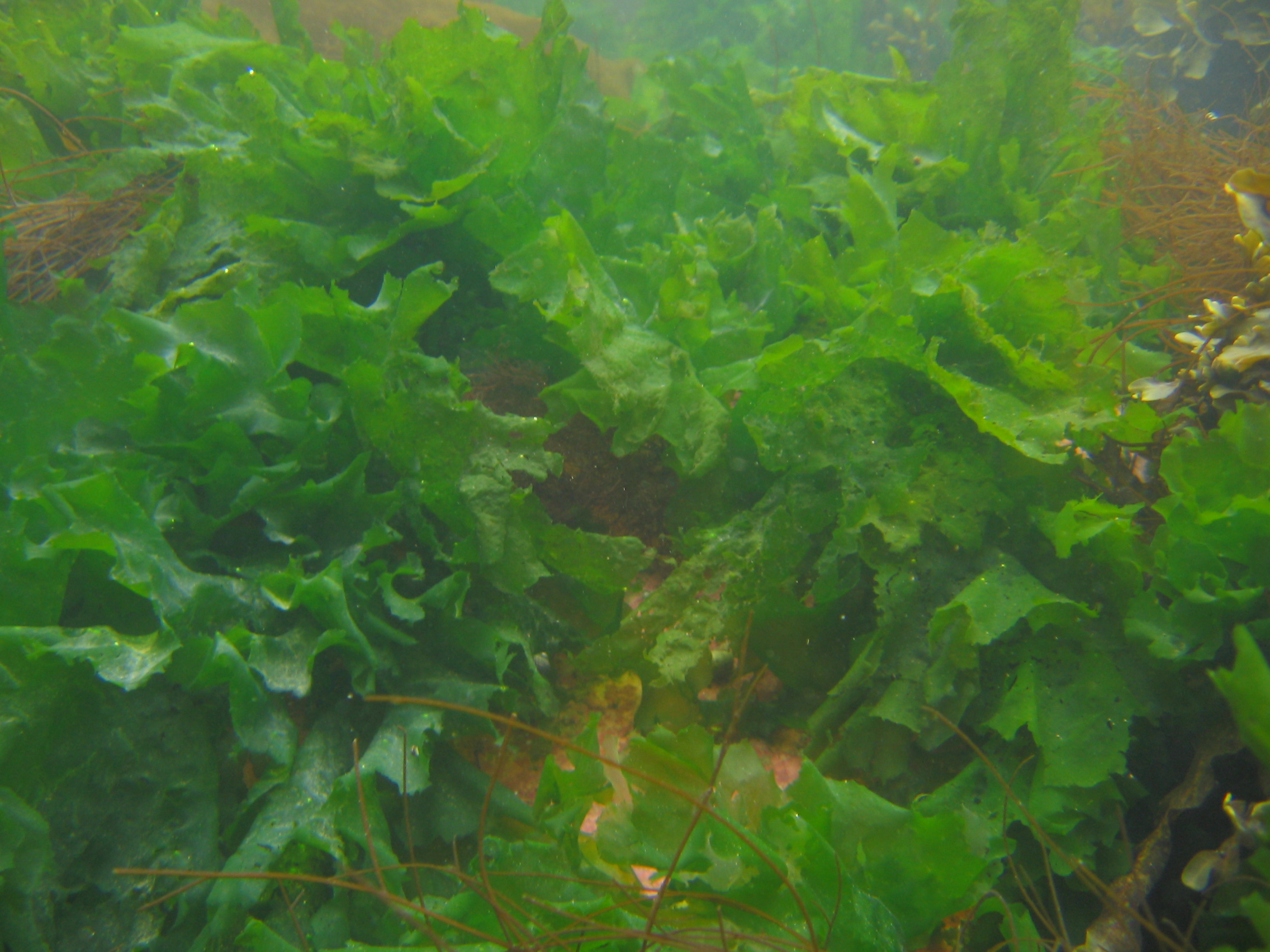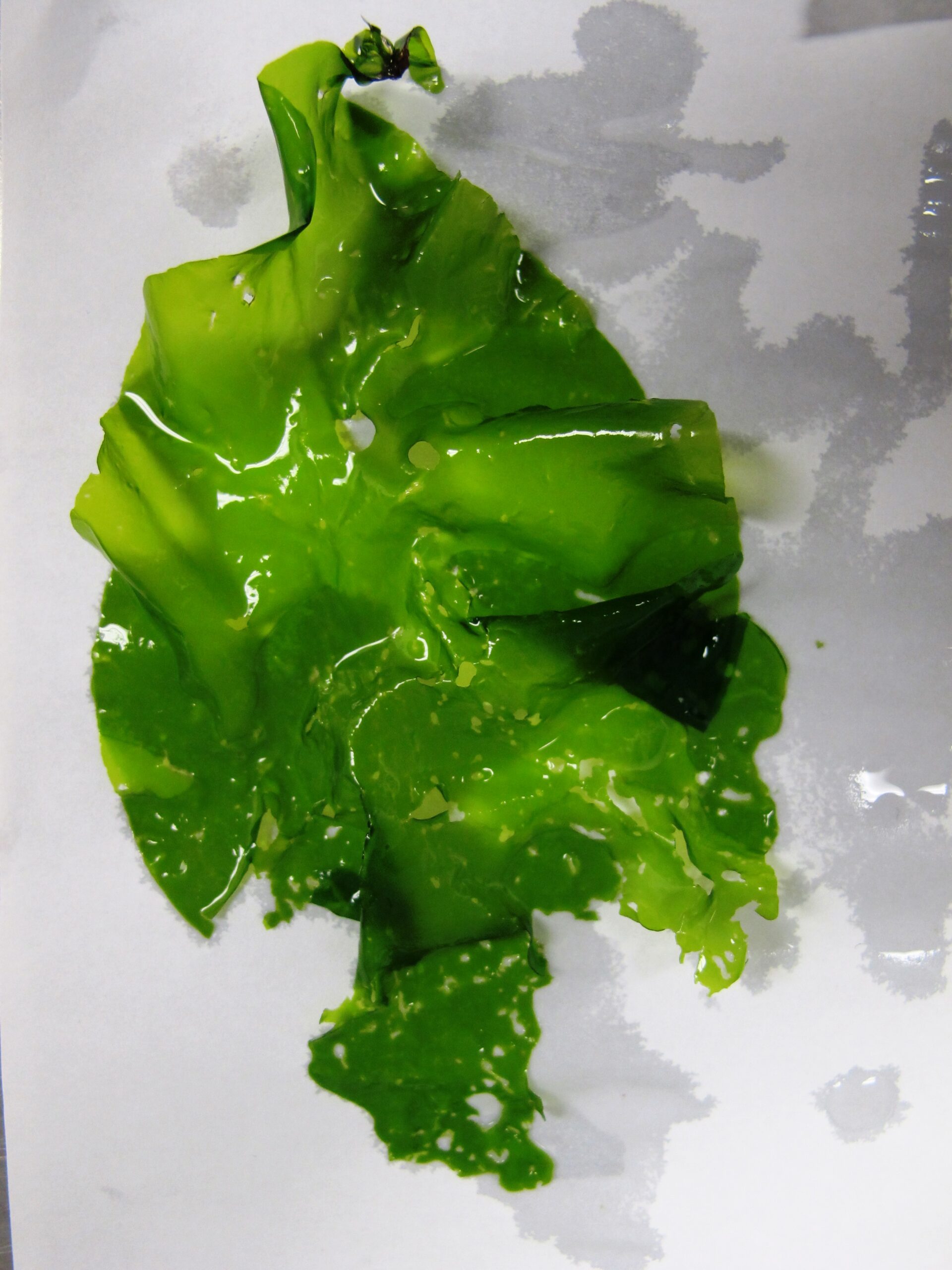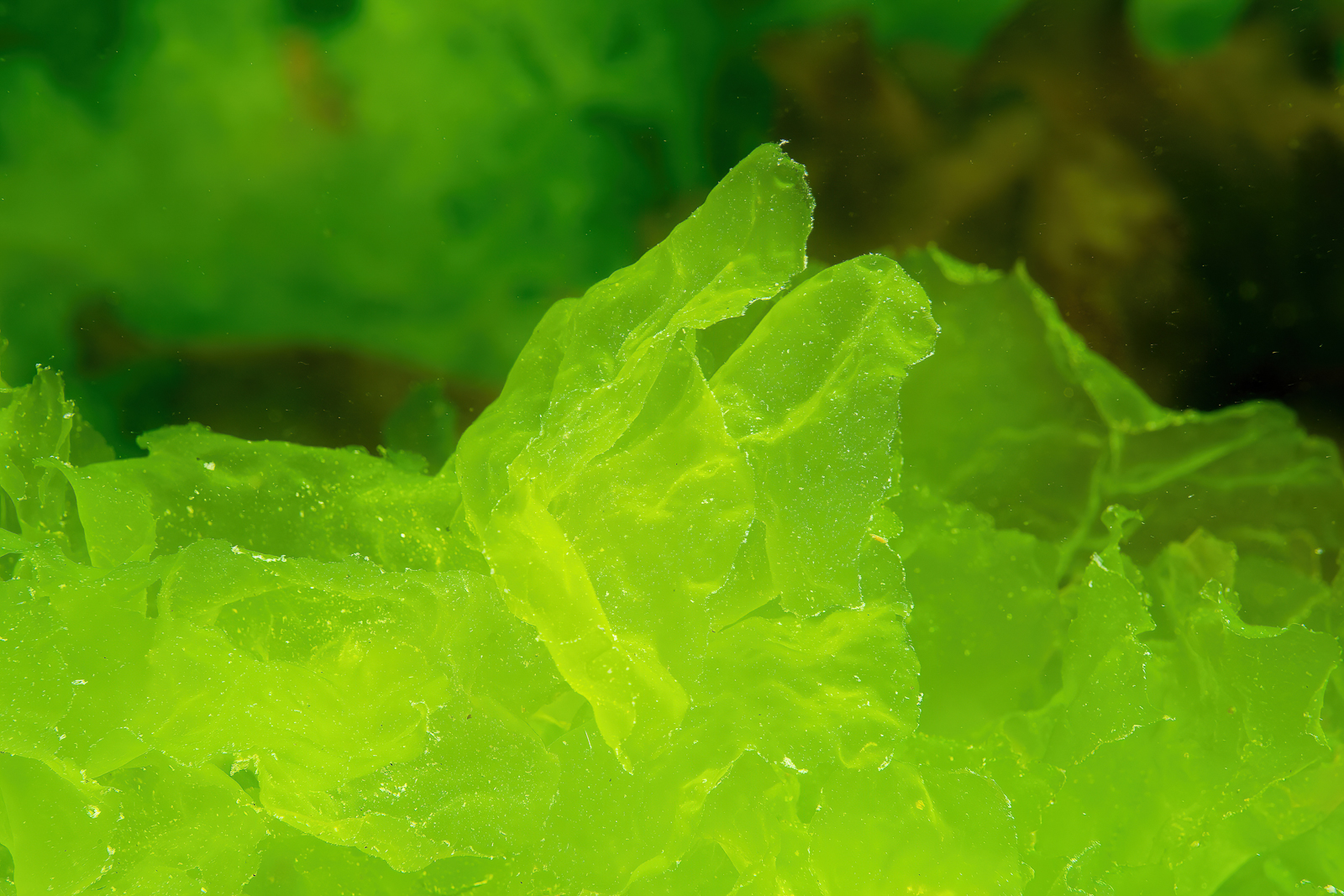
SIZE:
15 to 30 cm, up to 50 cm.
LIFE EXPECTANCY:
Less than a year.
LIFE CYCLE:
Species of Ulvae reproduce by releasing male or female cells that fuse to form a new alga.
Sea lettuce is small in the spring. They develop mainly during the summer when the water is warm. Growth takes place at the extremities, either the holdfast or the fronds. In fact, they do not even need to be attached to the substrate to grow.
Sea lettuce has no stipe. Its frond is extremely thin and flexible, translucent green, but sometimes darker. It has a wavy edge and a small holdfast.
Coastal zone, up to 10 m depth, in salt or brackish waters.
Sea lettuce prefers calm, moderately exposed environments because it detaches easily.

It is a rather dispersed alga. You will not find them clustered together in dense underwater forests.
Credit: Éric Tamigneaux
PREYS:
CO2
Solar energy
PREDATORS:
Herbivorous molluscs
Shrimp
MACHINES:
Hand harvesting.
REGULATIONS:
Harvesting requires a permit.
May to December in the Gaspé Bay and May to June in the Haute-Gaspésie.
Only every second frond can be harvested at low tide in the intertidal zone.

The picker can only harvest every other frond in the intertidal zone at low tide.
Credit: Éric Tamigneaux
Sea lettuce is a Smarter seafood-listed species.
BENEFITS:
Sea lettuce is rich in protein, vitamin B12, iron, calcium and magnesium. It also contains starch and a good quantity of fibre.
It can also be used as a natural fertilizer, given its high nitrogen and phosphorus content.
LET’S COOK:
Fresh, full-bodied taste. Its flavour is similar to that of spinach with an added hint of the sea. Its texture is tough when raw but softer when cooked.
OUR CULINARY ADVICE:
- Freshly picked, sea lettuce can be consumed directly, thinly sliced; for example, in salads, sauces and soups.
The waters of the St. Lawrence are known for their good quality. However, as algae absorb the elements present in the water to grow, it is preferable to ensure that the harvesting site is clean before eating this species fresh.
Mirror, mirror
Sea lettuce is so named for its culinary qualities and its shape, which are very similar to those of lettuce leaves.






